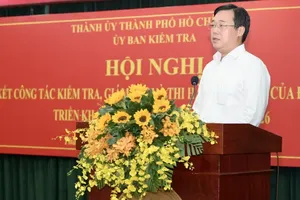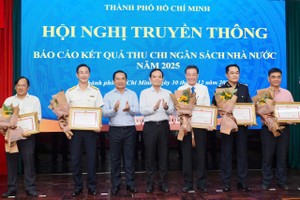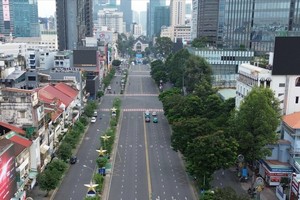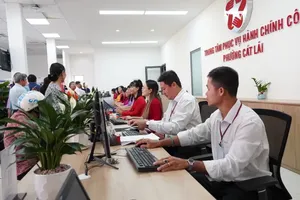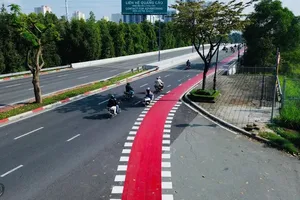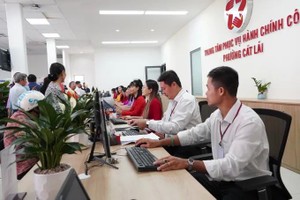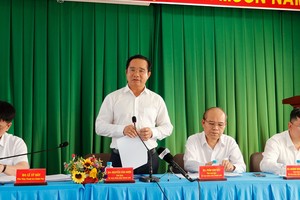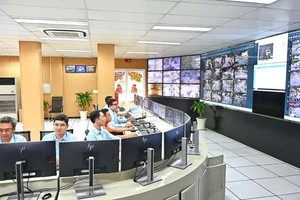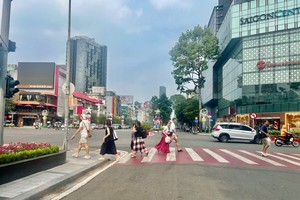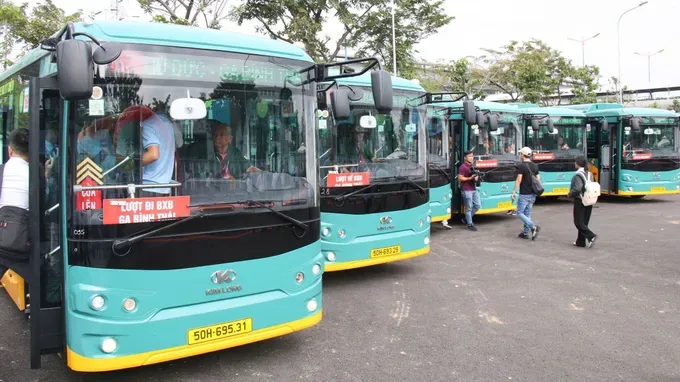
This initiative not only marks an important step in promoting environmentally friendly vehicles but also lays the groundwork for establishing Low-Emission Zones (LEZs) in the Southern region, with the goal of citywide implementation after 2030.
HCMC begins mandatory motorbike emission testing from July 2026
Under the green transport pilot, starting in 2026, Ho Chi Minh City will begin emission controls for motorbikes in the former Can Gio District (now merged into four communes namely Binh Khanh, An Thoi Dong, Can Gio, and Thanh An) as well as in Con Dao. Specifically, from July 1, 2026, motorbike emission testing will be introduced. From 2030, all motorbikes in circulation will be required to meet at least Euro 2 (EU2) emission standards.
From 2031, low-emission zones will be mandated in eligible areas.
According to Deputy Director Bui Hoa An of the Ho Chi Minh City Department of Construction, these two pilot areas were chosen due to their ecologically sensitive environments, high conservation needs, and relatively low traffic volumes, making monitoring and enforcement more manageable. The pilot will be rolled out in phases, with ongoing evaluation and adjustments to ensure practical alignment.
Equally important is the establishment of a clear policy framework and timeline, enabling both residents and businesses to prepare. A key principle highlighted is that of a ‘just transition’, which goes beyond technical requirements and costs to ensure that all social groups have equitable access to green transport solutions.
The ambitious plan to electrify transport in Can Gio District and Con Dao Special Zone directly impacts the lives of more than 70,000 people. With 33,000 motorbikes and nearly 1,000 cars serving as vital tools for daily work and commuting, transitioning to electric vehicles presents a substantial economic hurdle, particularly for the many low-income families in the area. This underscores the importance of developing a green transport strategy that is both environmentally sound and socially equitable.
Vice Chairman Ho Van Binh of the Can Gio Commune People’s Committee noted that while the area no longer has households classified as poor, 22 percent are still near-poor. This group is the most vulnerable if forced to switch vehicles. Without adequate support policies, the shift to electric transport could impose a heavy financial burden and risk exacerbating social inequality.
For this reason, Vice Chairman Ho Van Binh proposed that the city fully subsidize the cost of new vehicles for disadvantaged groups transitioning from gasoline-powered to electric motorbikes. Beyond vehicle support, he emphasized the need for vocational training and livelihood transition programs to help residents secure sustainable employment opportunities within a green economy.
Ho Chi Minh extends support policies
To meet residents’ mobility needs during the transition to green transport, an electric bus network will be developed. This includes a main route along Rung Sac Road, branch lines connecting local communes, and an eco-tourism route serving Binh Khanh, An Thoi Dong, Can Gio, and Thanh An.
In Con Dao Special Zone, six new electric bus routes will be launched to serve residents and tourists traveling to Co Ong Airport, Ben Dam Port, and historical sites. In addition, shared electric bicycles will be introduced in residential areas, tourist destinations, and hotels, supported by solar-powered charging stations installed at bus terminals, markets, and neighborhoods.
On financial mechanisms, Deputy Director of the Ho Chi Minh City Department of Construction Bui Hoa An said the plan includes a wide range of incentives. Specifically, 100 percent exemption from registration fees for battery-powered electric cars until February 28, 2027, with a proposal to extend to 2030, while 50 percent reduction in license plate registration fees for electric cars and motorbikes, and a 50 percent reduction in road maintenance fees for electric transport businesses.
In addition, the program will subsidize up to 50 percent of loan interest for enterprises investing in electric buses and charging stations as well as provide 20 percent interest support for individuals and households purchasing electric motorbikes, direct subsidies covering 10 percent of purchase costs (up to VND5 million) for residents buying electric motorbikes, and cover 70 percent of investment costs for charging stations.
Old gasoline motorbikes will be compensated at 70 percent of their remaining value. Deputy Director Bui Hoa An announced that for affluent households, the city encourages self-investment in vehicle purchases, while for low-income families, there will be low-interest loans and long-term installment options. For businesses, the State will reduce taxes and fees to incentivize fleet transition. Most importantly, he added, near-poor households will receive 100 percent support for vehicle costs to ensure social welfare.


